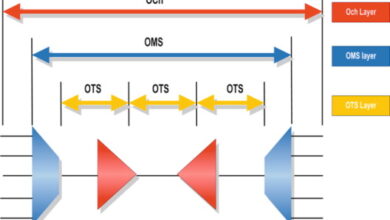
Top Mind Blowing Inventions of Technology that will Revolutionize Society soon
Nuclear Fusion Electricity for Commercial use
In its most basic form, nuclear fusion is the process by which energy is released when hydrogen atoms, or, if you prefer, “atomic nuclei” are fused and exposed to extremely high temperatures. Massive amounts of energy are released throughout this process, which mankind is becoming more and more in need of. By the way, the sun functions in the same way.
The near limitless supply of hydrogen on Earth, which can be taken from water, plus the fact that the only byproduct of nuclear fusion is safe helium, makes it an important process. As fusion reactors don’t produce any long-lived radioactive nuclear waste, they are also safer than fission reactors. If put into practice, commercial nuclear fusion power will increase energy availability and security while producing inexpensive, utility-scale electricity with minimal environmental impact.
In addition to private enterprises conducting their studies, some countries have made significant investments in fusion research. Other reactors are being developed, but the first one that could produce energy-positive fusion is the ITER reactor, which is being built in France and is scheduled to start operating in 2026.
Fusion research is expensive and time-consuming, though. The main problem with the technique is that to initiate the fusion process, rectors now need to reach temperatures higher than those seen in the sun. More energy is needed to accomplish this than the reaction generates. The practical use of fusion power is still unknown and perhaps more than ten years away, despite recent advancements.
Robot Knowledge Sharing
Impressive yet incredibly dumb, robots can be found in workplaces, warehouses, homes, and public spaces. They perform effectively in tightly controlled settings, but they become stuck or break in every new scenario, which is usually very costly. That is changed by “robot knowledge sharing” technology. The goal of the concept’s proponents is to develop a standardized method for robots to communicate with one another.
We know that trial and error, or reinforcement learning, is an effective method for AIs to learn, and that is how that information would be obtained. It could be as simple as realizing there is an obstruction on the road or as complex as being able to grasp an object. Costs will drop at a rapid pace, while efficiency will increase dramatically.
We won’t be able to replace the genie after it has been removed from the bottle. Let’s put the Terminator talks on hold for 2040, though, as a lot of standardization in hardware, sensors, ML procedures, and data configuration is required before the idea can be implemented. Nothing may get done since everyone involved will want to do things their way. Ultimately, humanity might only be saved by its incapacity to come to a consensus on anything.
DAOs
Working on a project you love will take precedence over interviews. You will be employed by multiple companies, each of which will pay you according to an agreement you did not sign. You will witness everything your unfamiliar coworkers do as you compete for prizes with them. Not only will you be able to influence your company’s direction, but all of your clients will too. You’ll be constantly “on,” remote, and worldwide. Like something out of a dream? You’re accurate. A bad dream? Once more, correct. Greetings from the decentralized autonomous organization world.
Many of the technology’s (or is it just the concepts?) supporters believe that DAOs will soon be how people collaborate to make decisions in the digital world. They’ll use two important tools to help them do this. First, the regulations that govern an organization will be written as a sequence of “IF/THEN” statements that are directly programmed into a blockchain, making them permanent and auditable. Second, voting shares, which are also tracked on a blockchain, will be distributed to stakeholders in the form of “digital governance tokens.” Theoretically, conducting business in this manner eliminates today’s organizations’ legalese and hierarchical structure (because all stakeholders have a say).
Decentralized autonomous organizations have the potential to construct any kind of work organization. engineering firms, consulting firms, investment firms, etc. However, that is only theory; the real world is more nuanced. Just 13,000 DAOs were operational as of May 2023, and their combined treasury (invested capital and liquid assets) was close to US$23 billion. That is all for now.
A Customer’s Digital Twin
Have you ever desired the dullest crystal ball you’ve ever seen? There is no need to wish any longer; businesses are constructing digital twins of their clients using AI. They will have the ability to foresee the future, but only up to the point when you choose the brand of toilet paper to purchase. Trust your gut if that sounds like a Balzac premise.
Using dynamic algorithms and sufficient data (such as surfing and purchase histories, social media profiles, geo-location, and social connections), it is now simple to build commercial digital duplicates of particular people or personas.
Not only may these imitations aid businesses in comprehending and forecasting behavior, but they could also be used to examine, at a low cost, how alterations to retail settings could influence consumer choices.
Businesses have less leeway when it comes to their goods, services, promotions, and marketing campaigns as marketplaces get more competitive and borrowing becomes more expensive. Without a doubt, the ability to play with consumer categories similar to how we used to play The Sims will minimize the cost of mistakes and increase stockholder profits. Isn’t that the main idea?
6G
Three years ago, people were thinking about 5G and all the industries it would change, like entertainment, self-driving cars, and the Internet of Things and our experiments with it are far from over. However, it’s already time to consider 6G, the internet service of the future. For me, the fact that there is still some disagreement over 6G’s features is excellent news. This time, “later” might not come anytime soon: 6G commercialization won’t happen until after 2030, even though design and development have already started. This is in line with the telecom industry’s well-known trend of bringing on a new generation every ten years.
For now, what is certain is that the technology will surpass 5G in terms of delivering increased peak data rates, reduced latency, a far higher connection density, and energy efficiency. It remains to be seen, though, if the transition from 4G to 5G will be as big. The consensus among experts is that AI, along with secrecy, security, and privacy, will be crucial elements of the technology.
The government’s involvement in 5G’s design will be entirely different since the governments of the US, Japan, and Korea already plan to have a role in the nation’s future infrastructure. We’ll see if that ends up being better for privacy.



